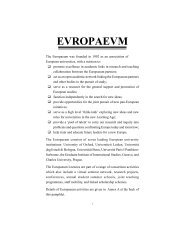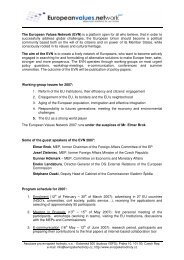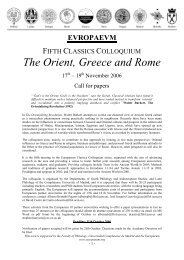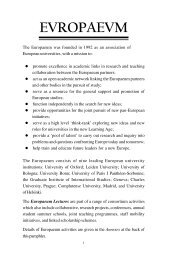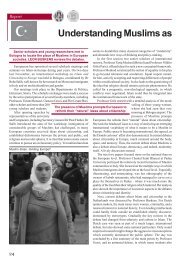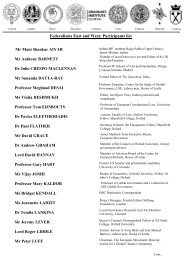Authors Iain Begg | Gabriel Glöckler | Anke Hassel ... - The Europaeum
Authors Iain Begg | Gabriel Glöckler | Anke Hassel ... - The Europaeum
Authors Iain Begg | Gabriel Glöckler | Anke Hassel ... - The Europaeum
You also want an ePaper? Increase the reach of your titles
YUMPU automatically turns print PDFs into web optimized ePapers that Google loves.
financial market rules. <strong>The</strong> ESFS authority over the European financial<br />
system would guard against the inadequacies or “capture” of national<br />
regulators. Most importantly, it would ensure the sufficient scale of<br />
operation necessary to prevent or effectively confront cross-border<br />
European-level systemic banking crises.<br />
<strong>The</strong> ESFS should be modeled as a single, integrated, cross-sectoral<br />
financial market supervisory institution, comprising banking, insurance<br />
and securities market supervision under one roof. Integrated financial<br />
supervision also makes sense in view of the process towards creating a<br />
pan-European capital markets infrastructure, with consolidated stock<br />
exchanges, clearance and settlements systems, and so on. Given the<br />
desirability of incorporating supervision of the city under a European<br />
supervisory scheme, the ESFS has the advantage of being able to play this<br />
role better than the ECB, for as long as the UK remains outside the<br />
Eurozone.<br />
<strong>The</strong>re are some good reasons for assigning financial supervision to an<br />
institution separate from the ECB. According to a familiar argument, a<br />
conflict of interest may exist between financial supervision and central<br />
banking, in that a central bank may be tempted to loosen its monetary<br />
policy in order to bolster the banking system. It is also important that each<br />
institution retains a clear and unambiguous mandate that won’t lead to<br />
conflicting objectives or create risks that might undermine credibility in<br />
one area as a result of promoting the other. <strong>The</strong> information acquired by<br />
a central bank’s participation in the money market and foreign exchange<br />
dealings can be shared with the financial supervisor, in a structure of close<br />
interaction between the two and the financial industry, without the central<br />
bank having to perform a supervisory function. And successful rescue<br />
operations can be performed with the ECB in a central role (coordinating<br />
private creditors and public funds) without necessitating a joint supervisory<br />
function, which can be carried out by a distinct institution. Finally, a clear<br />
division of labour between the ESCB and the ESFS would help ensure a<br />
coherent communication strategy, an institution speaking with one single<br />
voice to the markets (“one voice policy”), avoiding conflicting messages<br />
and mixed signals emitted in situations of crisis. 17<br />
As the ESFS solution leaves local supervision to national authorities, some<br />
have criticised it as an inadequate substitute to a fully-fledged central<br />
super-regulator. However, complete regulatory centralisation is not<br />
politically feasible; and probably not even desirable either. <strong>The</strong> ESFS as a<br />
structure has the potential to lead to deeper integration. By ironing out<br />
38<br />
After the crisis: A new socio-economic settlement for the EU




